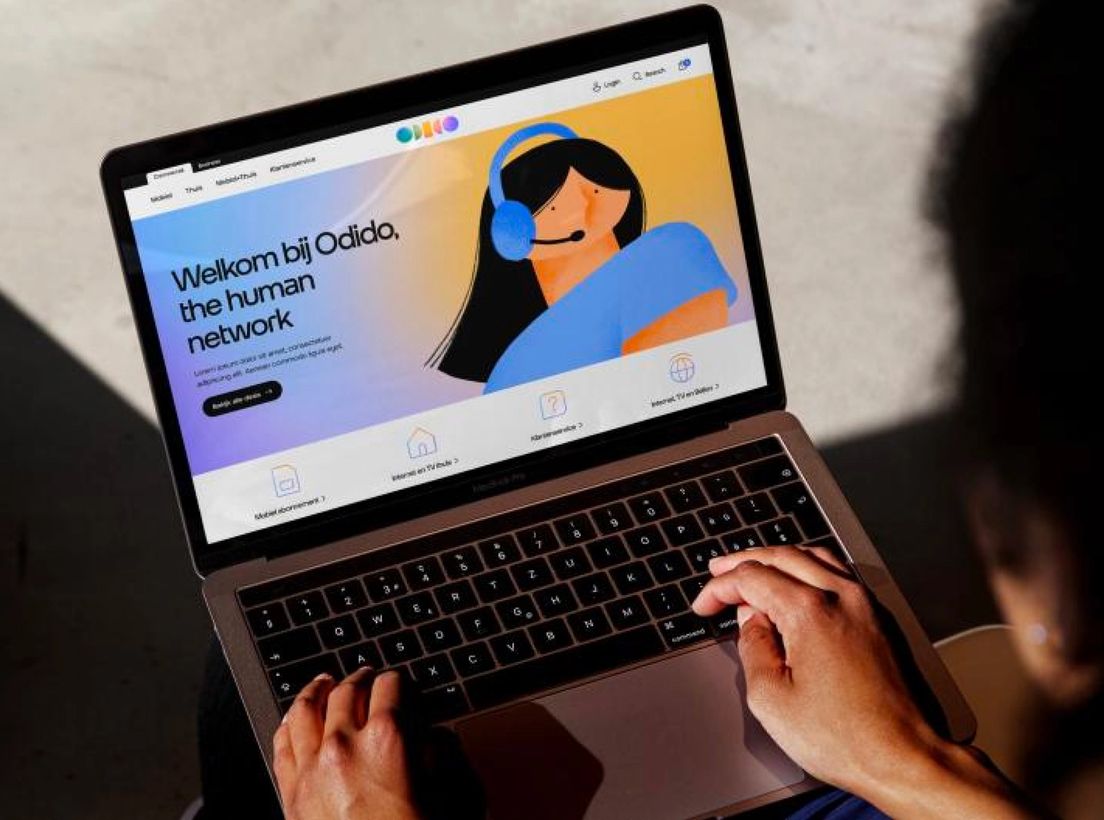
Tim Groot
Tech & Business Analyst
4 Jan 2024, 13 min
Tech predictions: Looking ahead to the year that will be, 2024
Introduction
Happy New Year everyone! Welcome to the second special edition newsletter ‘The Year That Will Be.’ Unlike my regular newsletter, I won’t be linking articles within my items this time. These are MY predictions after all. Instead, since it’s rather hard to get articles from the future, I’ll be using my serendipity and deep end sections to give you a collection of other 2024 predictions from around the internet.
Much like ‘The Year That Was’ special edition, the items for ‘The Year That Will Be’ are in no particular order. Each item is a ‘main’ item. I’m super excited and grateful for another year together, so let’s make it a good one!
The year at a glance
A quick overview of this week’s content.
- The Year That Will Be
- Predictive Serendipity
- Diving To New Depths
- One More Thing…To Start Us Off
My predictions for the tech world of 2024
My predictions for the tech world of 2024.
Streaming Consolidation And Adaptation Fixation
One of the major events of 2023 was the vicious territorial clashes between streaming services, Hollywood struggling to retain relevance amid the gradual decline of Box office sales, and major exceptions to that rule being movie adaptations of famous franchises such as Barbie and Super Mario Bros. The movie Oppenheimer was also a breakout success. This wasn’t so much a franchise adaptation as a competently made movie with good timing. Many people working on AI have an unhealthy obsession with their work being the next Manhattan project (which created nuclear weapons). J. Robert Oppenheimer led that project, and the movie is a dramatization of him. That general hype, and the constant association between AI and nuclear weapons, did much to propel Oppenheimer forward as far as cultural relevance is concerned.
Speaking of nuclear options, the Hollywood strikes were the longest and most widely supported in decades. Widely supported meaning that both Hollywood’s writer’s and actor’s guilds simultaneously participated, rather than just one or the other. Streaming services were already struggling due to too much churn and costs, but this certainly didn’t help them. I suspect that was one of the key reasons that the actors and writers were ultimately able to force some concessions. This is also why I think I think 2024 will be the year that many small, niche streaming services and a couple major streaming services either collapse entirely or enter into partnerships with one another.
Similarly, the stocks of Netflix and Sony pictures are on the rise since they are generally perceived as ‘stable ports’ during increasingly chaotic times. Netflix is actually trying to get into game streaming to diversify and get ahead of the adaptation curve. Superhero movies are oversaturated now, and adaptations of video games look poised to take over. Which would be really convenient for Sony, which has an outstanding stable of gaming, streaming, and movie Intellectual Properties (IP’s) already available. Better still, and the reason they fared the best during the strikes is that Sony has barely any streaming infrastructure to maintain compared to Netflix and its peers.
As the market adjusts, increasing subscription costs and advertising will be used as padding. That will really suck for consumers, yet I think such padding will give production companies the breathing room they need to get their (movie) house in order. As for other cost cutting measures, there’s no way we’ve seen the last of studios trying to take shortcuts such as getting actors to sign off on doing short recording sessions and then having their voice used to train AI replacements. We’ll have to see how well those new and improved contracts hold up as 2024 progresses. Residuals (payments after the initial work) will become more important than ever, that much is certain.
As for the box office…eh…it’s a little outside of my wheelhouse, but I kind of feel like they have a decent chance of changing their fortunes if they can properly capitalise on the social element of movie watching. With the global loneliness epidemic we’ve got, it honestly wouldn’t be a bad idea for them to use socialising with likeminded people as a core part of a new value proposition.
Going In For the NIL
‘Name, Image, Likeness’ (NIL) will be at the heart of the struggles and opportunities of the 2024 creator economy. The creator economy is a blanket term for creators big and small who make content such as newsletters, YouTube videos, assets for game development, but also physical goods such as a lovely little crochet carbuncle I received from a friend of mine. The Carbuncle in question here is a creature from the Final Fantasy series. Unofficial merchandise is big business, especially at expos!
What will be particularly interesting with regards to NIL is the fact that various consumer grade AI solutions for deep faking rose to prominence near the end of 2023. There’s a world of difference between technical and practical capabilities of a given system, and only those systems that are accessible enough for casual users are what I’d consider ‘consumer grade.’ We’ve had the technical capabilities to clone all manner of aspects of a person’s identity for ages now, but things such as voice cloning and real-time animation of digital copies has been a complex, technically demanding process thus far. That’s where the ‘practical’ part of capability comes in. Rather than exclusively being used for nefarious purposes, it feels like 2024 will be the year that wider adoption of recreational and commercial replication takes off. The tools to digitally clone people will become user friendly and performative enough to facilitate this, and that will benefit legitimate workflows as well.
In that regard, licensing deals will get much more cutthroat, especially in the recording industry. This industry has always fought tooth and nail to maintain its vice grip over the IP’s and likenesses that have always sustained it. This may come as a surprise to some, but the record labels were actually the biggest winners of the transition to music streaming. Their revenue streams are actually a lot bigger and more reliable now that you can’t just burn your buddy’s CD’s and have that music until your CD bites the dust. That’s one of the major thorns in Spotify’s side, its costs rise in proportion with users’ listening. Thus the single most important part of negotiations for any kind of performative work will come down to NIL rights and ownership in 2024.
Closed Source Crusades
With the Activision Blizzard merger concluded (for now) some of you might be worried that we won’t have any multi-billion dollar grudge matches between mega corporations to watch this year. But have no fear! The Closed Source Crusades are here! Those that have read my 2023 content will be well aware of the complex and precarious state of Open Source software, and how it relates to Intellectual Property law. For those just joining us this year, welcome! I’m so happy to have you, here’s a brief recap:
Generative AI was the catalyst that made long festering problems of proper attribution and compensation in the art and software worlds collide with the industrial scale reality of monetisation not being fair. At all. Previously, open source, and art platforms relied on the sharing of ‘stuff’ by passionate creators. This sharing was for the mutual creative benefit of everyone, but also used for the financial benefit of corporations. Indeed, source available, and closed source software tend to be shells built up around open source software, or freely released art assets. The core is technically ‘free’ but the comfortable usage and integration of it into broader ecosystems is what costs you.
So you see, it’s not that AI is responsible for ‘stealing’ people’s work. Rather, the flood of powerful new AI tools have made such ‘theft’ so easy and scalable that it’s suddenly gone from dirty open secret for industry insiders, to a big public stink for all the world to see…uh…smell. We were talking about the music industry before, so how about some (adapted) lyrics from an old classic by the Black Eyed Peas? Platforms, I know you like to think your shit don’t stink. But lean a little closer, and you’ll notice. Your algorithmic roses really smell like poo, ooh, ooh!
And that’s the thing. It has never been a problem to take something someone else made, and to then do your own thing with it, to put your spin on those themes, ideas, splice in some new possibilities. That’s how creativity works. No, the problem is who gets to make money from ideas. The problem with generative AI is that the likes of MidJourney and Stable Diffusion are charging massive premiums for work that other people did. This was work done either without expectation for compensation, or as part of professional artistic careers that require dissemination of the work online. Incidentally, this is why I believe there’s nothing inherently wrong with using generative AI as part of a wider toolbox, it’s just another tool if you use it make something new and uniquely yours.
The New York Times is suing OpenAI, not to protect its writers, but to protect its brand and force an expensive licensing deal. In this case, and many others that will follow, the lawsuits are about who gets to exploit creators, as its always been since well before we got this generative AI boom. AI power players such as Meta have famously gone on record admitting that generative AI isn’t financially viable if they pay everyone for the training data these systems need. Court cases, even ones as big and expensive as this new one, are cheaper than licensing every bit of training data…for now.
And that’s how we arrive at the big push towards locally run models that I’m confident will occur throughout 2024. this will place both the energy (AI tools are super power hungry) and legal burdens of generative AI on users, especially in the open source space. There will be many, many court cases by those rich enough to sustain them, and the End User License Agreements (EULA’s) of all major platforms will be periodically adjusted based on the outcomes of these court cases. Generally speaking though, smaller creators, and regular users of apps such as Instagram or anything by Google and Microsoft will be used to bide time. For what? To set up inhouse solutions such as hired actors, writers, and ‘AI tutors’ to make models as self-reliant as possible. This 1st party data will probably be a longer term moat digging strategy as far as AI is concerned. To what extent deferring responsibilities for AI output will actually work in the wake of the EU’s ongoing regulatory movements…well, I have a hunch we’ll find out sooner, rather than later.

Hardware Hijinks
I’m interested to see whether or not the RISC-V chip architecture will see any sort of boost from the ongoing chip wards between the US and China or not. Whilst I still feel like the major chip stories of 2024 will be primarily ARM based, I can’t help but be interested in the strategic implications of an architecture that’s harder to control due to its (technically) open source nature. This happens to be one of the major advantages of Open Source, all information tends to be right out there on the streets. It’s hard to keep secrets from your enemy when there are no secrets to keep after all. Speaking of secrets, I’m morbidly curious to see how Samsung’s big AI push will go this year. Their S24 series of smartphones is predicted to launch around January 17th, and as I type this I’ve received an invitation to sign up for ‘Galaxy AI.’ Samsung has had a particularly humiliating time this past year when it comes to AI. One of the most famous examples was when two engineers leaked a treasure trove of confidential information using ChatGPT.
Samsung lost out on being the first to implement Titanium into their devices, so it’s likely that they want to at least beat Apple to the punch as far as launching their own integrated AI solution goes. You could argue Google already did that but in terms of market share, Samsung and Apple are still in an entirely different league, the rivalry between the two much more pressing to Samsung from a PR standpoint.
On top of launching their own AI this year in some capacity (or so I predict), the Apple will also be launching their ‘Spatial Computer’ called the ‘Vision Pro.’ I predict I’ll cost around €6000 for a base model with 8GB of RAM. Apple still seems dedicated to having users die on that particular hill for it, and all too many are fully prepared to do so, sadly. Can you imagine if this thing also only has 256GB of storage for the base model? Man.
Being serious for a moment though, hardware integration will absolutely be critical this year. Not just because on device AI is the only realistic way forward if even one of those major court cases against AI model makers succeeds. But also because with increasing regulatory, new hardware releases are being called ‘boring.’ So companies will need noteworthy software integrations to make their hardware sexy again, and they’ll need the hardware to make sure the operating costs of particularly resource hungry software doesn’t wipe out their margins, or worse. Tight hardware integration is also critical to the gaming ambitions of service companies such as Netflix, which don’t have their own hardware.
Honestly, the biggest chance at success here will be if ARM sees major industry wide success. This feels extremely likely, but it’ll be one hell of a bumpy ride 2024. Apple’s M-Series is based on ARM, so any win for ARM as an architecture is a win for Apple as a frontrunner in the usage of it, maybe enough to finally fulfil the company’s dream of becoming relevant or even dominant in the gaming space. For all their posturing and bullying of ‘partners’ I don’t think the chip war between the US and China will affect the overall flow of 2024 too much. When all is said and done, the financial interests of the countless companies reliant on these two to play ball, far outweigh the egos of the politicians leading this trade war.
Ads As Band-Aids For Failing Business Models
To a certain extent, advertising has always been a band-aid for non-viable business models. The fact that this temporary quick fix ended up being so insanely lucrative was what made ad revenue into the primary revenue stream for so many platforms. That’s also how advertising technology (AdTech) became the titanic presence that it now is within the wider tech industry.
But in a profound example of why it’s such a bad idea to shit where you sleep, AdTech is now in a death spiral. The attention economy which initially made social media based advertising print endless amounts of money is now the noose around the industry’s neck. Why?
As with so many things to do with advertising, the main focus for 2024 will be on Google. Not just for the antitrust court cases that are still going against it, but for its pointless and inevitably doomed struggle against Adblocking. See, the owner of the Steam Gaming platform, Gabe Newel once said “Piracy is a service problem.” People don’t block ads because they don’t want advertisers to make money. People don’t block ads because they expect everything to be handed to them for free. People block ads because they don’t want to be on the edge of their seat during a pulse pounding thriller, only for some insane crackpot commercial for a product they’ve never heard of, voiced by someone that wants to be there even less than they do, at a volume inexplicably at least 2x louder than what the viewer’s device is actually set to play at.
I think the reason most ads are voiced as if they are speaking to someone with limited cognitive capacity is because those that make most of these ads think such people are the only kinds of people who either don’t install ad blockers, or who will stay glued to their screen no matter what. TV and Streaming ads these days are the Nigerian Price scam of visual media. The audience is, to a large extent, self-selecting. And that’s what baffles me so much about actively antagonising the people who wouldn’t watch your ads anyway. All it accomplishes is to alert both regulators and the wider public to the fact that you consider them to be gullible idiots.
Obviously, there’s a lot more complex, nuanced stuff at play here, but the crux of the AdTech situation over the course of 2024 will be what I’ll call overstuffing. Too many ads will be stuffed in too tight a window of time, thereby pushing away more people, which will worsen the vicious cycle of companies trying to wring more money from shrinking user bases. The only way out is healthier, more user and creator-friendly business models. But I’ve some doubts that investors would be particularly keen on those. So what we’ll likely see is a gradual breaking point being reached over the course of 2024, followed by an AdTech crash and reset heading into 2025.
More Medical Tech Time By Tim
I expect that there will be more activity in the medical technology field, particularly with regard to biotech and imaging technologies, not to mention the products and services meant to track and present this data. As a result, I predict that there will be more items about medical technology in my newsletters this year. One biotech example is CRISPR, a family of DNA sequences prominent (at least in the public consciousness) for the genetic engineering tech named after them.
Over the course of 2023, several long-term research projects working with CRISPR either neared, or entered the clinical testing phase. Whilst that usually means that safe to use results are still a few years off, this is the stage during which the more notable discoveries and breakthroughs tend to occur. Thus, whilst I hardly expect a mass production ready treatment to come out in 2024, I do expect more extended clinical trials, and potential approval by regulatory bodies for the wider testing of associated techniques. It wouldn’t surprise me if there were at least one or two major biotech breakthroughs over the course of 2024, specifically in the field of tailored medicines. I’m using that term to refer to medicine specifically designed around an individual patient’s unique genetic makeup. This also happens to be a field in which AI systems are expected to be very helpful if properly implemented, given their high suitability for, and efficiency in pattern recognition.
Medical technology will remain a major battleground in tech. If you don’t believe, me, just go back and watch Apple’s 2023 Worldwide Developer’s Conference (WWDC) or look at Amazon’s recent acquisitions, which include a healthcare provider. And whilst former Silicon Valley darling Theranos was a major scandal at the time, I do feel like its promise of a revolution in the blood screening process might end up being fulfilled by someone else sooner rather than later. It’s been long enough that the PR pollution has thinned, and the promise of such a technology remains genuinely amazing. Incentives lead to investment, and not just frauds are after such a breakthrough. Far from it.
As for wider trends, women’s health tech will be one to watch for, especially in the US, where regressive politicians have managed to enact measures such as abortion bans in many states, with nationwide consequences. Where there’s a lucrative enough problem, tech will be there to sell a solution. This is how we got vaccines for COVID so relatively fast during the pandemic, and it actually led to major advances in fields such as RNA research as well. Incentives work wonders sometimes.
Unfortunately, for those hoping to use their brain as a computer sometime soon, I doubt there will be that much progress this year. There’s still too much drama and uncertainty around one of the leaders in the space, Neuralink. Yet there have also been promising tests with spinal treatments using electrical stimulation. So perhaps we might see the pace pick up if the Neuralink situation is resolved satisfactorily, or if a big enough treatment elsewhere manages to distract the public and investors enough. It will be tough for any startup in the medical technology field in 2024, though at the same time, major tech companies will likely double down on their existing wellness- and fitness-based strategies. This is a continuing trend from 2023 that I don’t see stopping anytime soon.

Predictive serendipity
A collection of 2024 predictions from around the internet.
- TNW’s European Job Predictions LINK
- Dark Reading’s Hacktivism Predictions LINK
- Mashable at CES @2024 LINK
- Venture Beat AI Predictions LINK
- The Guardian’s Fashion in Tech Predictions LINK
- Gary Marcus Predicts More AI Liability in 2024 LINK
- Ars Technica Wonders About The Foldable Future LINK
- Digiday’s Anti-Predictions for AdTech LINK
- Vox’s 24 Predictions for 2024 LINK
- TNW’s Climate Tech Predictions For 2024 LINK
Diving to new depths
Longform predictions for 2024
- Vogels’s 2024: Amazon’s CTO, Werner Vogels, gives his tech predictions for 2024. LINK
- Apple’s game plan: A detailed article by Inverse regarding Apple’s past with gaming and its intended future. LINK
- Digiday’s 2024 AdTech Guide: A guide to what’s in and out for marketing in 2024, according to Digiday. LINK
- Gaming Predictions: Game Industry.biz asks some industry insiders about their expectations for gaming in 2024. LINK
- VC’s 2024 AI predictions: Venturebeat interviews several prominent Venture Capitalists about their 2024 AI expectations. LINK
One more thing... to start us off
I have so much stuff I want to learn in 2024 aaaaaaaaaaaaaaaah! One of the greatest joys of writing the 2023 newsletter was all the amazing people it allowed me to meet, and all the wisdom and insights they so graciously shared with me. I felt though, at times, like I didn’t have enough of a handle on particular technical aspects to meet them where I wanted to. And, so I’ve resolved to learn a whole bunch of stuff this year, such as the basics of some game engines, design programs, and other relevant things. Am I looking to become a specialist in any of these things? Hell no, ain’t nobody got time for that with these deadlines a loomin’. I just think they’re neat, and being able to better explain stuff to you, the readers, will be a wonderful bonus to my hobbyist satisfaction.
Satisfaction after a long and arduous process is actually a pretty good overall theme for 2024. There’s stormy weather ahead for the tech world, and we’ll definitely see our fair share of trials and tribulations. That’s good. One of the books I’m reading right now is titled “no mud, no lotus” and I think the same holds true for the positive potential of technology. We need the bad things to appreciate the good things. We need to actually be confronted with problems that won’t wait for solutions to motivate those among us that maybe…would prefer to just sell band-aids instead. Above all, I’m just really excited for the year that will be, and happy that that you’ve chosen to spend that tech time together with me.
Perspectives
Industry insights, company updates, and groundbreaking achievements. Stories that drive Hypersolid forward.

